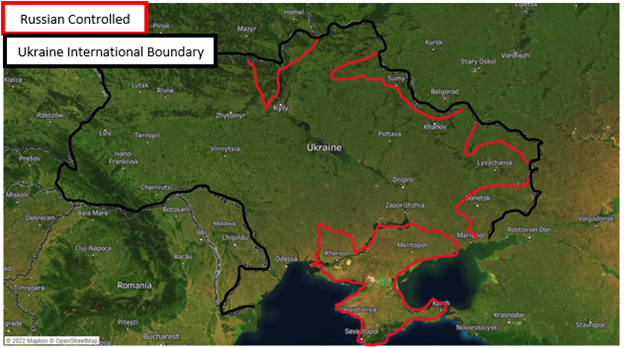
Russia invaded the Ukraine after weeks of posturing but is struggling to make military gains within the country. Russia amassed approximately 190,000 troops on the border to put pressure on Kiev to capitulate to its demand of moving away from the West, but these troops did not have the desired effect.
Russia’s invasion of the Ukraine suffers from logistical problems when moving its personnel and equipment, stunning military defeats in capturing key targets, and external political pressure on its economy. Russia has also resorted to bombing civilian areas and deploying all of its regular troops on the border into the Ukraine.
In 2014, Russia took control of Crimea and fostered a rebellion in the eastern districts of the Ukraine against the current government. Moscow did this after a rebellion that sparked the old Prime Minister to leave the country. The eastern rebellion continued for years as rebels and Russian private contractors fought the new Ukrainian government. Russia recognized the rebellious eastern government as an independent country while it made it clear it intended to invade the Ukraine.
When the Ukraine did not capitulate to Russia’s demands, Russia sent its troops across the border. Russian troops spread out across the border and began attacking the Ukraine on multiple fronts. The troops attacked the capital Kiev, the second-largest city Kharkov, Donetsk, and southern Ukraine. Russian troops advanced to the outskirts of Kiev but were pushed back by Ukrainian troops and armed civilians. Russian troops have been making gains in the south and the east as troops move toward Odessa and Mariupol but have struggled to take Kiev.
Since Russian troops crossed the border, Russia has faced sanctions, political isolation, multiple proposed UN bills condemning its actions, military defeats, and a devastating impact on its economy. Putin is unlikely to stop its invasion of the Ukraine no matter what the cost. There are several reasons why Russia is unlikely to give its invasion. Some of those reasons are because of the common culture between the two countries, its massive investments in pipelines that cross through the Ukraine, and losing a full-weather ally. Also, Putin might not be confident of Europe’s ability to wean itself off of Russian natural gas and crude. They might also assume America’s inability to effectively enforce long-term sanctions on Russia would face similar challenges to the situations in Iran, Venezuela, Sudan, and North Korea.
Culture
The Ukraine and Russia share a strong cultural heritage that dates back before the formation of the CCCP. These two countries share the same religion, food, culture, and even several parts of Eastern and Southern Ukraine even speak Russian. Since the 2014 revolution in the Ukraine, Kiev has been building relationships with the EU and will eventually become a full member of NATO. This angered Russia due to the continuous expansion of NATO through Eastern Europe.
After the Berlin Wall fell in 1989 and the collapse of the CCCP, a treaty was signed between the US and Russia to unify Germany. During this treaty, there was an understanding that NATO would not move eastward. Whether this understanding was official or unofficial is up for debate, but NATO has continued its expansion eastward. If a country that is culturally identical to Russia joins the EU and NATO, this will mark a major failure of the Russian economic and political model. When this happens, White Russia may fall to NATO and Russia will be completely isolated in Europe. This will make them completely reliant on China as its only all-weather ally.
Many people try and make the comparison between Cuba or Mexico joining the Soviet Union, but a more adept analogy would be if Canada joined a military and political alliance with China. This would throw the US into chaos and would prod the American public into action. America would likely react to this situation with force or coercion but would refrain from launching ballistic missiles at civilian targets.
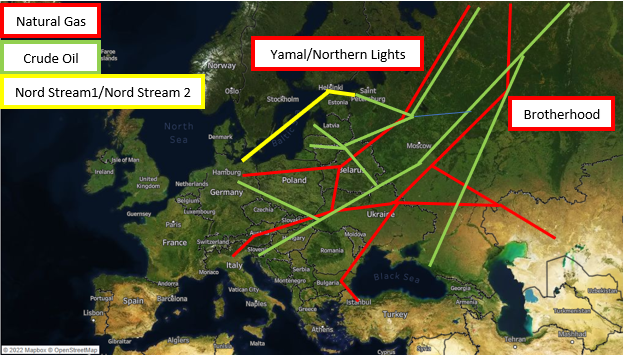
Transit Fees
Another point of contention between Russia and the Ukraine is transit fees. Russia ships crude and natural gas bound for Western Europe through pipelines that crisscross Ukraine. Russia has to pay Kiev fees to ship energy through its country, but they also have struggled to agree on the price of natural gas even before the 2014 revolution. Gazprom had tough negotiations with the previous and current Ukrainian governments in the past but finally struck a deal right before the 2014 revolution.
Russia briefly turned off the gas to the new government after the 2014 revolution and the Ukraine began diversifying its gas shipments away from Russia with the help of Azerbaijan. Also, Ukraine imports most of its energy but has vast reserves of untapped shale and coal that it could draw on in the future.
Russia developed the Nord Stream pipeline to ship crude directly to Germany under the Baltic Sea. This pipeline was able to bypass the Yamal pipeline through Ukraine and save Russia from having to pay transit fees.
Russia developed the Nord Stream 2 pipeline to increase the capacity of crude oil and natural gas to Western Europe under the Baltic Sea. Russia built Nord Stream 2 while the US threatened to enforce sanctions to prevent construction and completion of the project. The pipeline was completed and ready to produce as long as Germany was ready to approve transportation. Germany was stalling on the production of this pipeline as the US put pressure on stopping the project before the start of the war.
Once Russia completed the pipeline, the US put maximum pressure on Germany to halt the start of the pipeline. This is because Western Europe would be entirely reliant on gas from its eastern neighbor which would give Russia undue influence over Germany. Russia’s recognition of the eastern rebels caused the US and Germany to put an end to the second Nord Stream pipeline and triggered toothless sanctions. After the second Nord Stream pipeline was officially shut down, Russia moved its troops into the Ukraine.
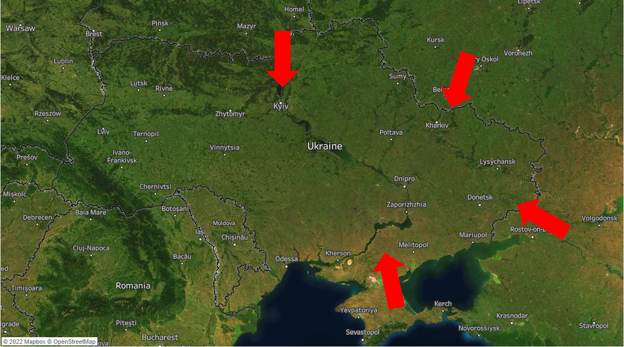
Russia’s Invasion Of The Ukraine
Russian troops crossed into Ukraine on February 21st of 2022 and attacked the country from the north, south, and east. Troops crossed over from Crimea, the Belarussian border, and from Donetsk in a bid to take back control of the Ukraine. Russia was under the assumption that Ukrainian troops would melt away similar to Afghan troops after the US left.
Ukrainians stood up against the invading troops and began protecting key areas in the north. Ukrainian troops were able to repulse Russian troops to keep key airports which prevented Russian troops from bringing in men and equipment. Russian troops were forced to bring in military equipment and personnel through Ukraine’s vulnerable roads. These convoys were quickly destroyed in the northern part of the country and Russia’s advance into the Ukraine was halted.
Ukrainian troops were able to sabotage and destroy armed convoys that poured into the country while protecting the Kiev Hydroelectric Station just north of Kiev. This allowed Ukrainian troops to keep power throughout the city which allowed them to connect to Elon Musk’s Starlink satellites.
The Ukrainian forces were able to repulse Russian forces in Kiev and have fended off Russian troops in the east. Russian special forces, the Spetsnaz, are some of the best trained fighters in the world and are likely operating in the Ukraine. They have been very active outside Russia for the past 10 years as they have been seen in Georgia, Syria, Libya, Venezuela, Crimea, and Central Asia. Russia has also relied on private Russian military contractors like the Wagner Group to fight proxy wars while letting Russia officially remain impartial.
But the main contingents of Russia’s BTG have very little combat experience. These main troops are far from combat-ready and have struggled to fight in close quarter combat in residential neighborhoods. These troops also struggled to transport themselves and their equipment to the front lines as civilians and Ukrainian forces were able to destroy tanks and equipment.
Russia’s air force has also seen setbacks during the war with Ukraine. Helicopters and Sukhoi planes have been brought down all over the country. The US and EU have been sending stinger missiles and Surface-to-Air Missiles (SAMs) that can be seen all over Kiev. The newest Sukhoi jets represent Russia’s attempt at developing stealth planes that should have been able to avoid detection by SAMs and singer missiles. These planes were meant to be on par the F-22 Raptor or even the internationally developed F-35.
Rumors are circulating that American and British governments sent special forces into the Ukraine before Russia invaded the country. Some of these alleged troops are stationed at the Kiev Hydroelectric power station and are fighting throughout the country. At the very least, NATO is almost certainly providing the Ukrainian military with intelligence on Russian movements that will help them intercept Russian troops and supplies. Satellite images and real time data would help civilians and Ukrainian forces target Russian convoys which could slow the advance of Russian troops.
It would be interesting if Western special forces were operating in the country because it would allow governments to understand how the two countries would fare in a hypothetical match up. If American special forces could cripple Russian special forces and the conventional military across a country that is as vast as the Ukraine, then they could fight Russia in places like Syria or Iraq if Russia attacked the West.
Currently, it is suspected that Russia has approximately 90% of the 190,000 troops in Ukraine right now and is expected to make major inroads in the country. This could explain why Russia is preparing its stockpile of nuclear weapons. Russia could have overextended itself in the Ukraine and cannot defend against an invasion in the eastern or western part of the country. If Japan begins to invade contested islands in the Pacific or if troops from Poland decide to take Russia’s enclave in Europe, Russia’s response would certainly be unpredictable.
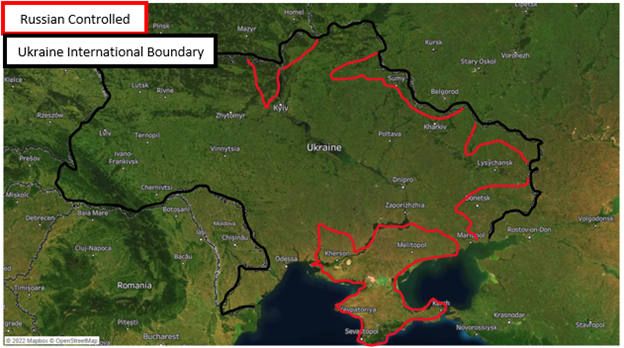
It’s unclear what Russia’s current losses are but images and videos show Russia has lost billions of dollars worth of equipment in the Ukraine. If they are losing troops at the same rate as their equipment losses, then this will demoralize Russian troops to the point Putin will have to abandon its plans for Kiev.
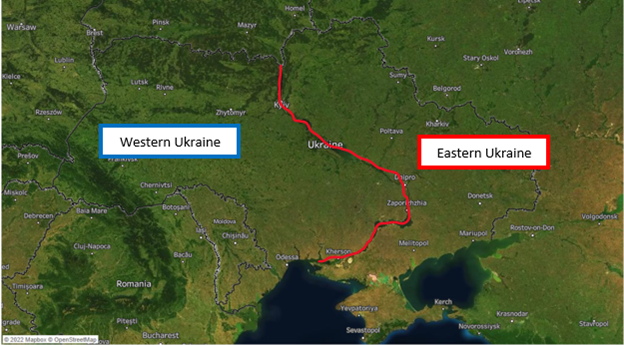
If Russia continues to struggle to gain ground in Kiev, it will probably settle for the territory east of the Dnieper River. This region is predominantly Russian speaking and is more closely aligned with Russia’s culture. It would also allow Russia to set up a barrier between itself and NATO. This would also cut off Ukraine’s access to the Black Sea which would put Russia firmly in control of trade up the Dnieper River. This will also help Russia avoid invading Western Ukraine that is more westernized and anti-Russian.
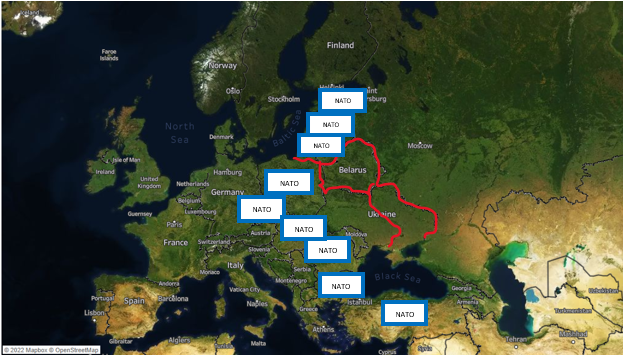
Russia’s biggest fear is being invaded by Europe. The country has fought wars in the east, mainly against Japan, but successful invasions always come from Europe. Napoleon and the Nazis were successful in making inroads into the region and were only stopped by heavy Russian losses and the Russian winter. This is the reason why Russia needs a barrier between itself and NATO.
NATO has continued to expand eastward and is surrounding Russia. Estonia, Latvia, and Lithuania are all members of NATO but do not have the population to be able to threaten Russia but if the Ukraine were to join forces with America, Poland, and the UK it would represent a major threat to Moscow.
Sanctions
After Russia recognized the rebellious eastern region of the Ukraine, the EU and Russia announced sanctions against banks that did not do business in the West. They also announced a pause on the start of Nord Stream 2 which would limit Russia’s ability to ship natural gas to Germany. Germany actively blocked NATO from transferring munitions through its country to support the Ukraine. The UK called for Russia to be banned from the intra-bank SWIFT system and called for stronger sanctions before they were rebuffed by Germany which imports massive amounts of crude and natural gas.
Once Russia attacked the rest of the Ukraine, Germany and other European countries announced sanctions on trading Russian debt, and banned most Russian banks with the exception of Gazprombank and Sberbank. Most banks in Russia don’t deal with the West and sanctions were unlikely to hurt them. The two largest banks will allow Russia to bypass any sanctions that the West will employ. It’s unclear how being banned from SWIFT will affect trade with Central Asia, Venezuela, Iran, and China but Russia will most likely be able to skirt US sanctions.
Russia sanctioned proofed its economy over the years to prevent America from toppling its economy. It built up some of the largest foreign currency reserves in the world and cut its foreign denominated debt to almost zero. America has been trying to prevent Russia from cashing in its foreign currency reserves which could prevent more countries from keeping their assets in USD.
One thing Russia will not be able to skirt is Europe’s ability to reduce reliance on energy imports from Moscow. America stepped in as a swing producer of natural gas and crude oil that has helped Europe begin to limit imports from Russia. This will allow Europe to diversify its energy dependence on Russia. Russia has already cut off flow through the Yamal pipeline into Europe, but American exports could make up the difference.
Companies are also cutting their relationships with Russia. BP announced that they would exit their $25 billion stake in Rosneft. This kicked on a series of companies that began to extradite themselves from the Russian economy. Shell announced that they would stop dealing with Russia but has picked up a cargo of Russian crude at bargain prices. Other companies like Dell, ExxonMobil, Apple, Maersk, and even Nike have declared that they will stop selling their products in Russia but it’s unclear to what extent they will limit their trade with Russia.
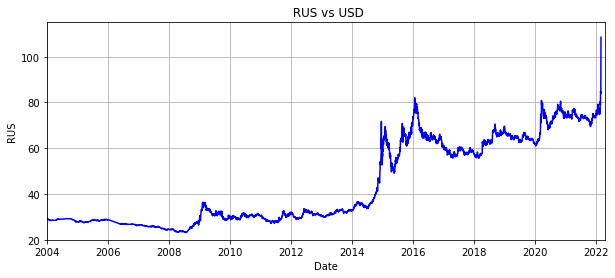
International companies have been limiting their exposure in Russia and the Ruble has collapsed. It’s important to note that there are still some Russian banks that can bypass the bans on the intra-banking system, India is trying to find a way around sanctions, and the US is importing approximately 412 MBPD of Russian oil while exporting 3.45 MMBPD of oil.

Russian imports only makeup only 4% of the US’s total imports and could easily be banned from the US. The government has also refrained from building American natural gas pipelines to the Northeast to reduce dependence on Russian imports. It’s also important to note that China could easily bypass sanctions by doing business with Russia directly in either Rubles or the RMB. Russia could even further bypass sanctions by using blockchain technology. But even if Chinese companies skirt US sanctions, similar to what they have in Iran and Venezuela, they will have trouble getting high-end technology to Russia for it to continue its war against the Ukraine.
Future Of Eastern Europe
Russia’s greatest fear is that the Ukraine would join forces with the west. While its attention is turned to fighting in the Ukraine, Georgia and Moldovia have announced that they will seek entrance to the European Union. This will put NATO and the European Union right on Russia’s western and southern borders. This could give the US access to more areas of the Black Sea, a military base in Georgia, or get permission for its warships to transit the Bosphorus Strait. These two countries will likely gain entry into the EU and if the Ukraine can keep Russia at bay, it will likely put in its own application to join the Union.
This will further isolate Russia along with its only all-weather European ally, Belarus. As Russia’s trade relationship with Europe deteriorates, it will rely more on its relationship with China. China may take advantage of Russia’s dependence on Beijing to extort trade concessions, transfer of military technology, take control of Central Asia, or even open Russian land up to Chinese citizens.
Also, a Russian loss in the Ukraine would be a national embarrassment for Putin. Putin may take unpredictable steps to maintain Russia’s superpower status and world standing. It’s unclear what steps, if any, Russia will take but they might use their allies in Central Asia and Iran to attack regional military bases or American embassies. They could also hack the American power grid, trigger a massive influx of refugees, or build relationships with fair-weather allies in Central and South America.
Tensions are unlikely to ease anytime soon in Europe and Russia will likely be more combative in the future. Even if they do win the war in the Ukraine countries in NATO will increase spending. Germany announced that they will immediately increase military spending at 2% of their GPD. This is a signal that other countries that have a more capable military will increase their spending and capabilities.
